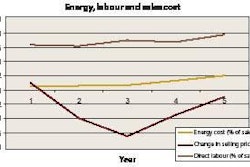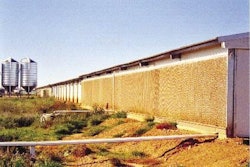H5N1 sub-type of highly pathogenic avian influenza (HPAI) is virtually unique and without precedence. The disease is pandemic in birds and potentially pandemic in people causing high death rates in both. Zoonotic (animal-to-human transmission) dimensions have clouded peoples’ perceptions of this particular virus disease making it all the more difficult to control.
Authorities have great difficulty in persuading small rural farmers and backyard poultry owners, already accustomed to high death rates in flocks from dedicated avian disease, that H5N1 HPAI may kill them.
The general public naturally see H5N1 as a direct threat to themselves. Many governments act accordingly by focussing too early and heavily on human infection without paying due attention to poultry. They do not see that H5N1 will not become pandemic in people if properly managed in birds.
Preference and precedence given to human dimension of H5N1 is more characteristic of countries where medical practitioners and scientists are held in greater esteem than are microbiologists, animal scientists and veterinarians. This is true in many developing countries where dichotomy of purpose and lack of co-operation between medics and vets has clearly held back progress on H5N1 eradication and management.
Countries lacking infrastructure and organization in livestock health and protection are clearly unable to control fast moving and changing zoonotic diseases of poultry like H5N1 HPAI. They ultimately experience a higher frequency of human infection, made worse by traditional close contact between people and poultry.
Given differences in perception for H5N1, it is worth looking at avian outbreak frequency alongside number of human cases in the countries of East Asia, where most data has been documented and accumulated (Table 1). Over 80% of confirmed H5N1 outbreaks in poultry and other avian species from December 2003 to 22 February 2007 occurred in East Asia where the virus originated in southern China. Exactly 80% of human cases globally (end 2003 to 28 February 2007) have occurred within the same East Asian region comprising China, North Korea, South Korea, Taiwan, Japan and the nations of South East Asia.
There is no correlation between number of avian outbreaks (most in poultry) and human cases in countries of the East Asian region. Indonesia – where H5N1 is most entrenched and has been so for the longest time – registers just 216 outbreaks against 81 human cases (ratio of 2.7:1). Vietnam which brought an initially serious situation under control during 2005 documents 2368 outbreaks with the highest number of human cases (93), but still achieves a high ratio of 25:1. Human cases in Vietnam are all pre-2006 and occurred before the disease in poultry was brought under much tighter control.
China, where it all started, records comparatively few (89) outbreaks but a relatively high number (23) of human cases worsening through 2006. Thailand with a similar disease history to Vietnam records 25 human cases, but the number of avian outbreaks exceeds 1000:1 so the ratio like that in Vietnam is very high (43:1).
Information from Cambodia is sparse and difficult to come by. Just 18 outbreaks in poultry looks too small given Cambodia’s reported 6 human cases with 100% mortality, especially since the 2007 outbreaks in Mekong Delta provinces of Vietnam adjoining Cambodia and from where the virus probably came.
Japan and South Korea initially experienced some serious outbreaks in 2004 and more recently in late 2006 and early 2007, but stamped on infections to prevent movement into the human population. Philippines are one of only a few countries in East Asian without any outbreaks.
There should be a strong correlation between number of avian outbreaks and human cases although structure of poultry industries and cultural considerations in different countries, like the extent of backyard poultry rearing, home slaughter and processing, wet and live markets, ownership of fighting cocks etc, will distort the figures to some extent.
More significant is under-reporting at varying levels and for all sorts of reasons. Rural farmers and urban backyard owners may be unable to distinguish bird deaths caused by H5N1 from generally high disease levels and death rates in their poultry flocks. Poultry owners may not report recognised disease symptoms because compensation payment following culling by government is not forthcoming or insufficient, a problem that has always loomed large in Indonesia. Figures released by the Indonesian Ministry of Agriculture suggest some 7 million birds have died from H5N1 since 2004, which clearly does not match with 216 reported outbreaks. When a disease becomes endemic, outbreaks are impossible to demarcate and distinguish in both time and place and cease to exist as separate entities.
Non-existent veterinary infrastructure clearly impacts on countries like Cambodia. Political factors make retrieval of reliable information and its verification by international organisations difficult in China and Laos and virtually impossible in Myanmar Republic and North Korea.
Outbreaks* and human cases** for H5N1 in East Asian nations
|
|
Avian outbreaks |
Human cases |
Deaths |
Death rate (%) |
Ratio avian:human |
|
Vietnam |
2368 |
93 |
42 |
45 |
25 |
|
Thailand |
1082 |
25 |
17 |
68 |
43 |
|
Indonesia |
216 |
81 |
63 |
78 |
2.7 |
|
China (PRC) |
89 |
23 |
14 |
64 |
3.9 |
|
South Korea |
24 |
0 |
0 |
- |
- |
|
Cambodia |
18 |
6 |
6 |
100 |
3.0 |
|
Malaysia |
15 |
0 |
0 |
- |
- |
|
Japan |
11 |
0 |
0 |
- |
- |
|
Myanmar |
11 |
0 |
0 |
- |
- |
|
Laos |
4 |
1 |
0 |
0 |
4.0 |
|
Hong Kong |
0 |
0 |
0 |
- |
- |
|
Philippines |
0 |
0 |
0 |
- |
- |
|
Singapore |
0 |
0 |
0 |
- |
- |
|
Taiwan |
0 |
0 |
|
- |
- |
*End 2003 to February 22 2007. (OIE)
**2003 to 19 February 2007 (WHO)
PRC= People’s Republic of China
*** Situation in North Korea unknown
Figures may also tell a story about virus epidemiology and the nature of disease management programmes in particular countries. H5N1 is endemic in Indonesian poultry. The virus is widespread throughout the country and present in all but two or three provinces. H5N1 is now an integral part of the overall disease complex in Indonesian poultry, and people have clearly ‘learned to live’ with the disease and its consequences to some extent.
If poultry owners cannot distinguish H5N1 from general poultry disease symptoms then owner-led reporting is non-existent. In the absence of government-led proactive surveillance, H5N1 cases go unnoticed, and the numbers reported are small in relation to the problem, which has happened in Indonesia. But high profile and concern generated by H5N1 infection in people means that most human cases in Indonesia are rapidly identified to give the low ratio of 2.7 between avian outbreaks and human cases.
Poultry vaccination is recognised as an important component of H5N1 management programmes in particular countries. China was one of the first countries to adopt widespread poultry vaccination but it can prove a ‘mixed blessing’. If all birds are vaccinated, and the vaccine is not a good match to the H5N1 strain, then infected birds will not show clinical symptoms but they still shed virus particles, posing threats to owners and anyone handling infected live poultry or carcasses.
China has recorded relatively few outbreaks in poultry considering the high number of human cases. Human cases have been confirmed in hundreds of kilometres away from any outbreaks in poultry. The most recent human cases reported in China were in the eastern province of Anhui (January 2007) and south-eastern Fujian province (28 February 2007). Last reported outbreaks in poultry were in September 2006, thousands of kilometres away in Inner Mongolia and Ningxia province in the North.
For East Asian nations with confirmed human cases, the chance of patient survival is significantly better in Vietnam.


















